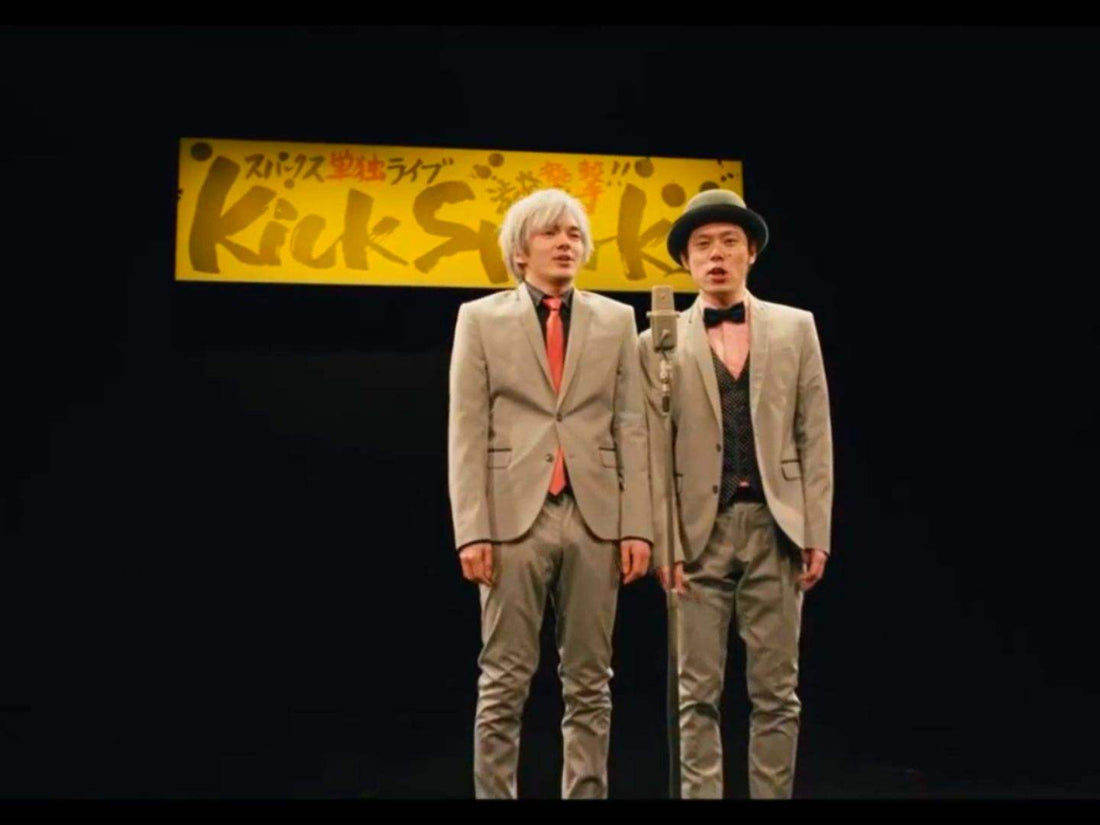The prototypes of Japanese comedy are rakugo and manzai. Manzai is a comedy sketch performed by a pair. They will dress in special costumes and make gags with each other to amuse audiences. Most jokes are about misunderstandings, puns, and other verbal gags. Manzai was originally written as “萬歳” (ten thousand years old, meaning long life). In 1933, Yoshimoto Kogyo popularized “漫才”, which means "cartoon" and "talent". Nowadays, many popular Japanese comedians start their career by performing manzai.
What is Manzai?

The content and format of manzai have evolved throughout its history. Manzai is a kind of talk show performed by a duo, sometimes by a trio. The two manzaishi (manzai performers) play their own roles, tsukkomi (the direct man) and boke (the funny man), and joke with each other, usually at a fast rate of speaking. Manzai is often associated with Osaka because manzai comedians often speak in the Kansai dialect in their performances.
Traditionally, manzai was performed mainly through radio. The two manzaishi had to focus on language, using puns and intonations to make audiences laugh. During this period, the two performers shared a single microphone. With the advent of the television era, the tradition of the duo sharing the same microphone remains and becomes an iconic symbol of manzai.
Compared with rakugo, manzai has more props. The comedians can use background music or play some instruments themselves. Although manzai should not use any scenery in principle, nowadays some innovative manzai performances use special scenery and costume to provide audiences with a better viewing experience.
History of Manzai

Manzai originated from the Heian period (794-1185) when Japanese people performed manzai on the first day of the New Year. It was a ritual in which a group of performers went to others’ houses to congratulate them with funny and auspicious words for the new year. Performers would also sing and dance with a drum beat to exorcise bad luck and pray for a prosperous year. In the Edo period (1603 - 1867), manzai became so popular that each part of Japan developed its own unique style of manzai.
In the Meiji era (1868-1912), manzai was no longer simply a greeting for the New Year. Tamagoya Entatsu, a manzai performer, combined manzai with other traditional art forms and introduced manzai to the theater as a stage art in 1887. The modernization of manzai began at the end of the Meiji period in the Kansai area. Modern manzai incorporates ventriloquism, dance, and singing, which makes it more attractive.
In the Heian period, manzai performers wore a traditional gown with their heads covered with a gauze cap. Later, the gown was replaced with suits that had loud colors. Young performers began to change traditions during the manzai boom of the 1970s. Many of them began to wear more fashionable or casual clothing. In addition, some comedy duos would wear unusual costumes to represent their unique characters in their performances.
Characters of Manzai

Manzai has two fixed character types: boke and tsukkomi. There are only two character types even for trio performances. The boke, once known as the toboke, comes from the verb tobokeru, which means to act silly in Japanese. The boke is the typical, overly jovial clown. He makes the audience laugh by saying or doing funny things, such as misunderstandings, making blunders, forgetfulness, and empty thinking.
The tsukkomi refers to the character who dovetails and corrects the mistakes of the boke. His role is to clarify the punch line and convey the fun to the audience. The act of roasting boke is called “tsukkomi wo ireru”. The timing of tsukkomi wo ireru is important. It provides a break in the boke’s jokes and therefore produces a brisk structural rhythm.
During the performance, the tsukkomi may hit the boke on the head or shoulder with a quick slap. A traditional prop used for slapping is a folded paper fan called a harisen. It can make a loud sound when it hits someone while not hurting them. Other traditional props include a small drum and Japanese bamboo paper umbrellas.

